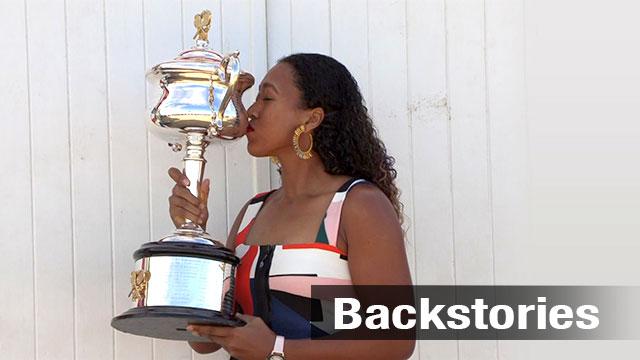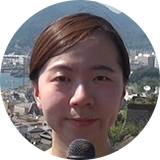Haitian Hero
Osaka was born to a Japanese mother and a Haitian father. Though she represents Japan professionally, her recent successes have been celebrated in Haiti.

After winning the US Open last November, Osaka visited her father's homeland and received a warm welcome from people there. She also met the president at the National Palace.

And when she won last month's Australian Open, TV, radio and print media all had wall-to-wall coverage of her success.

Haitian journalist Nixon Cyprien says Osaka has become a national icon and is an inspiration to the country's children: "People here actually play soccer more, but there's been a big change with Osaka. Many children have started to learn tennis. They're all dreaming of becoming Osaka."
Asian Pride
Osaka is the first Asian player of either sex to reach world number one. Her success has meant a lot to the people of the continent.

Tamarine Tanasugarn from Thailand reached number 19 in the rankings in 2002. She says Osaka's Japanese traits of humility and mentality are what set her apart. "She's going to be the next great model for Asian tennis."
Japanese Phenomenon
Since her Australian Open victory, Osaka-mania has been sweeping Japan. Fans have been buying her tennis shoes and rackets. Sponsors, from sportswear firms to watchmakers, run her commercials nonstop.

Despite her success, there's a question about which flag Osaka will play under when Tokyo hosts the Olympic Games in 2020. She currently holds dual Japanese and US citizenship. Japanese law requires her to pick one of the two before her 22nd birthday. She is currently 21.
And the relative lack of famous biracial figures in Japan before Osaka has meant there have been some clumsy attempts to handle her stardom. In January, Nissin Foods Group, one of her sponsors, released a commercial featuring an anime Osaka with light skin. This led to accusations of whitewashing, and the company took down the ad and apologized.
Japan faces multiculturalism
The age of globalization has led to more mixed-race children in Japan. More than one in 30 marriages are between Japanese and non-Japanese citizens. However, children from these families are often bullied at school, and many say they grow up to be self-conscious and with uncertainties about their identity.
Some have been speaking out about their experiences, and say stars like Osaka can be an inspiration.

Marie Nakamura is a model who has an African-French father and a Japanese mother. She says Osaka's success could be an opportunity to teach Japan to treasure diversity.
"I grew up in rural Kanagawa Prefecture. There were only ethnically Japanese people, I was the only different one. I was seriously bullied," she says. "Osaka's success can really change Japanese people's views."
Nakamura says that as Japan becomes increasingly diverse, society as a whole still has many things to learn. She now runs a non-profit that works to raise awareness about diversity in Japanese society.
"We are Japanese, even if we have darker skin and curly hair," she says. "I want to meet more children through my work and help them learn."

